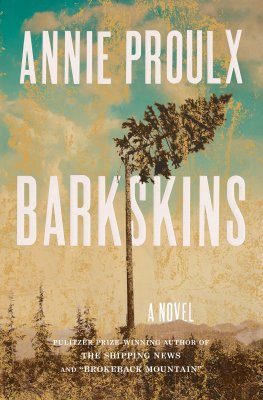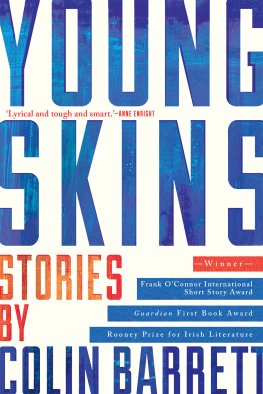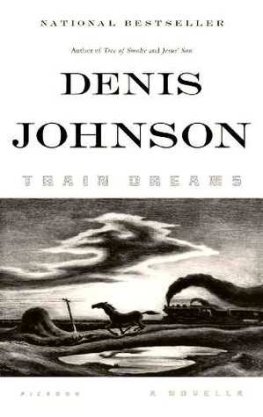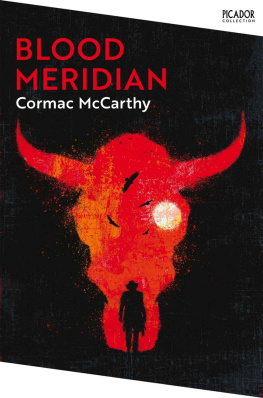Jonathan Dee
A Thousand Pardons
In the desert
I saw a creature, naked, bestial,
Who, squatting upon the ground,
Held his heart in his hands,
And ate of it.
I said, Is it good, friend?
It is bitter bitter, he answered;
But I like it
Because it is bitter,
And because it is my heart.
STEPHEN CRANE
The day my mom checked out, Razor Blade Baby moved in. At the end, I cant stop thinking about beginnings.
The city of Reno, Nevada, was founded in 1859 when Charles Fuller built a log toll bridge across the Truckee River and charged prospectors to haul their Comstock silver across the narrow but swift-moving current. Two years later, Fuller sold the bridge to the ambitious Myron Lake. Lake, swift himself, added a gristmill, kiln and livery stable to his Silver Queen Hotel and Eating House. Not a bashful man, he named the community Lakes Crossing, had the name painted on Fullers bridge, bright blue as the sky.
The 1860s were boom times in the western Utah Territory: Americans still had the brackish taste of Sutters soil on their tongues, ten-year-old gold still glinting in their eyes. The curse of the Comstock Lode had not yet leaked from the silver vein, not seeped into the water table. The silver itself had not yet been stripped from the mountains, and steaming water had not yet flooded the mine shafts. Henry T. P. Comstock most opportune of the opportunists, snatcher of land, greatest claim jumper of all time had not yet lost his love Adelaide, his first cousin, who drowned in Lake Tahoe. He had not yet traded his share of the lode for a bottle of whiskey and an old, blind mare, not yet blown his brains out with a borrowed revolver near Bozeman, Montana.
Boom times.
Lakes Crossing grew. At statehood in 1864, the district of Lakes Crossing, Washoe County, was consolidated with Roop County. By then, Lakes Crossing was the largest city in either. The curse, excavated from the silver vein and weighted by the heavy ore, settled on the nations newest free state.
Or begin the story here:
In 1881 Himmel Green, an architect, came to Reno from San Francisco to quietly divorce Mary Ann Cohen Magnin of the upscale womens clothing store I. Magnin and Company. Himmel took a liking to Reno and decided to stay. He started designing buildings for his friends, newly rich silver families.
Renos Newlands Heights neighborhood is choked with Greens work. In 1909, 315 Lake Street was erected. A stout building made of brick, it was one of Himmels first residential buildings, a modest design, small porch off the back, simple awnings, thoroughly mediocre in every way. Some say construction at 315 Lake stirred up the cursed dust of the Comstock Lode. Though it contaminated everyone (and though we Nevadans still breathe it into ourselves today), they say it got to Himmel particularly, stuck to his blueprints, his clothing, formed a microscopic layer of silver dust on his skin. Glinting silver film or no, after his divorce was finalized Himmel moved in with Leopold Karpeles, editor of the Bnai Brith Messenger. Their relationship was rumored a tumultuous one, mottled with abuse and infidelity. Still, they lived together until 1932, when the two were burned to death in a fire at Karpeless home, smoke rising from the house smelling like those miners boiled alive up in Virginia City mine shafts.
Or here. Here is as good a place as any:
In March 1941, George Spahn, a dairyman and amateur beekeeper from Pennsylvania, signed over the deed to his sixty-acre farm to his son, Henry, packed four suitcases, his wife, Helen, and their old, foul-tempered calico cat, Bottles, into the car, and drove west to California, to the ocean.
He was to retire, bow out of the ranching business, bury his tired feet in the warm Western sand. But retirement didnt suit George. After two months he came home to their ticky-tacky rental on the beach and presented Helen with plans to buy a 511-acre ranch at 1200 Santa Susana Pass Road in the Santa Susana Mountains. The ranch was up for sale by its owner, the aging silent-film star William S. Hart.
The Santa Susana Mountains are drier than the more picturesque Santa Monica Mountains that line the California coast. Because they are not privy to the moist winds rolling in off the sea, they are susceptible to fires. Twelve hundred Santa Susana Pass Road is tucked up in the Santa Susanas north of Los Angeles, off what is now called the Ronald Reagan Freeway. Back in 1941, when George was persuading Helen to move again, taking her knobby hand in his, begging her to uproot the tendrils shed so far managed to anchor into the loose beige sand of Manhattan BeachJust a bit east this time, sweet peathe city of Chatsworth was little more than a Baptist church, a dirt-clogged filling station, and the Palomino Horse Associations main stables, birthplace of Mr. Ed. Years later, in 1961, my father, still a boy, would start a wildfire in the hills above the PHA stables. He would be eleven, crouched in the dry brush, sneaking a cigarette. But lets not get ahead of ourselves.
At the heart of the ranch was a movie set, a thoroughfare of a Western boomtown: bank, saloon, blacksmith, wood-planked boardwalk, side streets and alleys, a jail. Perhaps the set dazzled Helen. Perhaps she a prematurely arthritic woman recalled the aching cold of Pennsylvania winters. Perhaps she spoiled her husband, as her children claim. Whatever the reason, Helen laid her hand on her husbands brow and said, All right, George. And though by all accounts Helen came to like the ranch, on the day George took her out to view the property for the first time her journal reads:
The property is quite expansive, surrounded by mountains. G. giddy as a boy. Not such a view as the beach, though. The road out is windy and narrow, sheer canyon walls on either side. Seems I am to be once again separated from the sea. And what a brief affair it was! Looking west I felt a twinge like something had been taken from me, something a part of me but never truly mine.
Within a week of the Spahns move up to 1200 Santa Susana Pass Road, Bottles the cat ran away.
But George was more adaptable than Bottles, and luckier. In 1941, Westerns were still Hollywoods bread and butter. George ran his movie set like hed run his dairy ranch, building strong relationships with decision makers, underpricing the competition. It certainly didnt hurt business when Malibu Bluff State Recreation Area annexed Trancas Canyon and sold off its many sets, making Spahns Ranch the only privately owned and therefore zero-permit outdoor set for seventy-five miles. The Spahns enjoyed a steady stream of business from the major studios, charging them a pretty penny to rent horses and shoot films at the ranch, among them High Noon, The Comstock Boys, and David O. Selznicks 1946 classic Duel in the Sun, starring Gregory Peck. TV shows were also shot at the ranch, including most episodes of The Lone Ranger and before Warner Brothers, coaxed by Nevadas tax incentives and the habits of its big-name directors, moved production to the Ponderosa Ranch at Lake TahoeBonanza.
We might start at my mothers first memory:
Its 1962. She is three. She sits on her stepfathers lap on a plastic lawn chair on the roof of their trailer. Her older brother and sister sit cross-legged on a bath towel theyve laid atop the chintzy two-tab roof, the terry cloth dimpling their skin. They each wear a pair of their mothers my grandmothers oversize Jackie O. sunglasses. It is dusk; in the eastern sky stars are coming into view yes, back then you could still see stars over Las Vegas but the family faces northwest, as do their neighbors and the teenage boys hired to cut and water the grass at the new golf courses and the city bus drivers who have pulled over to the side of the roads and the tourists up in their hotel rooms with their faces pressed to the windows. As does the whole city.














